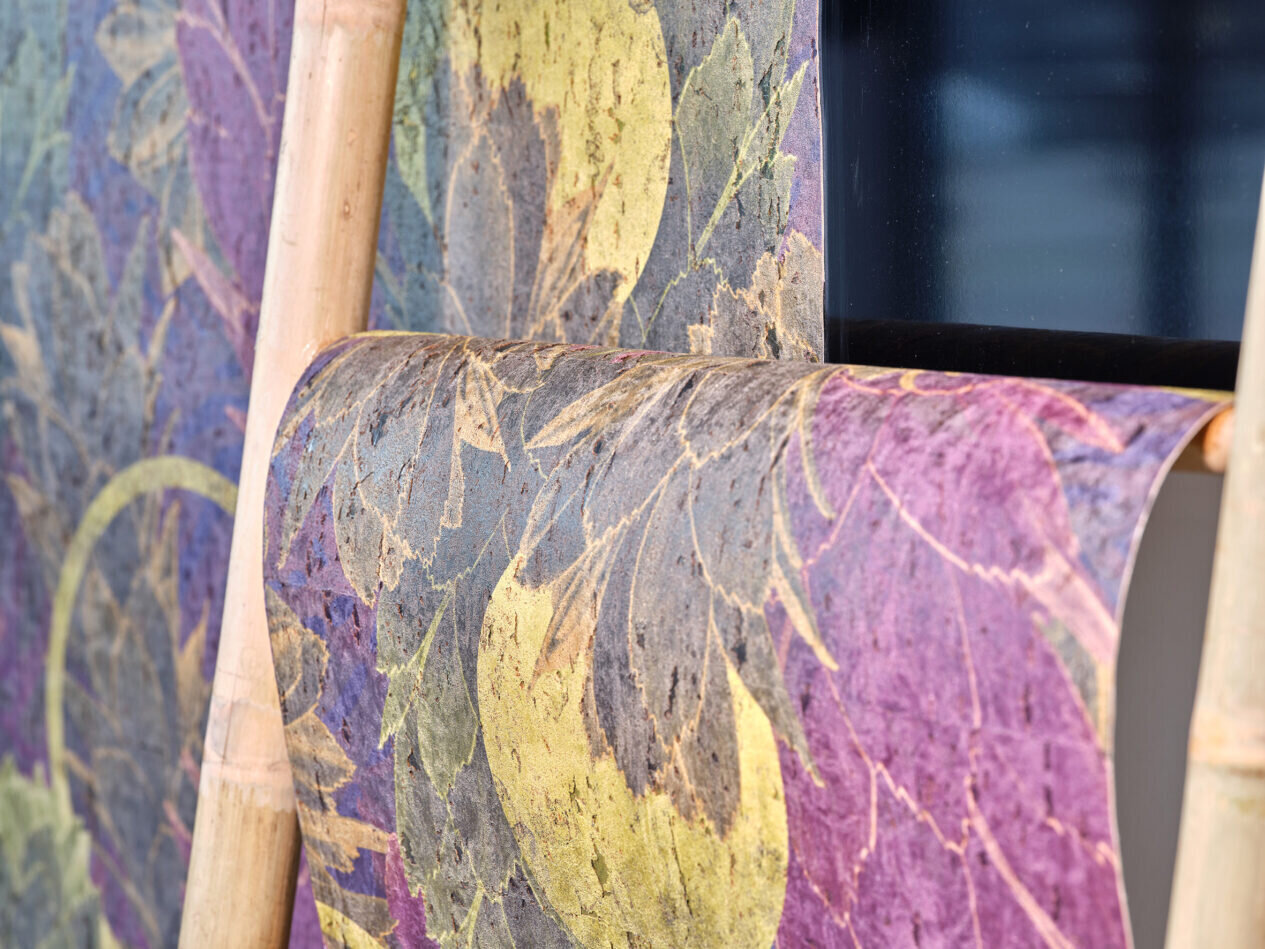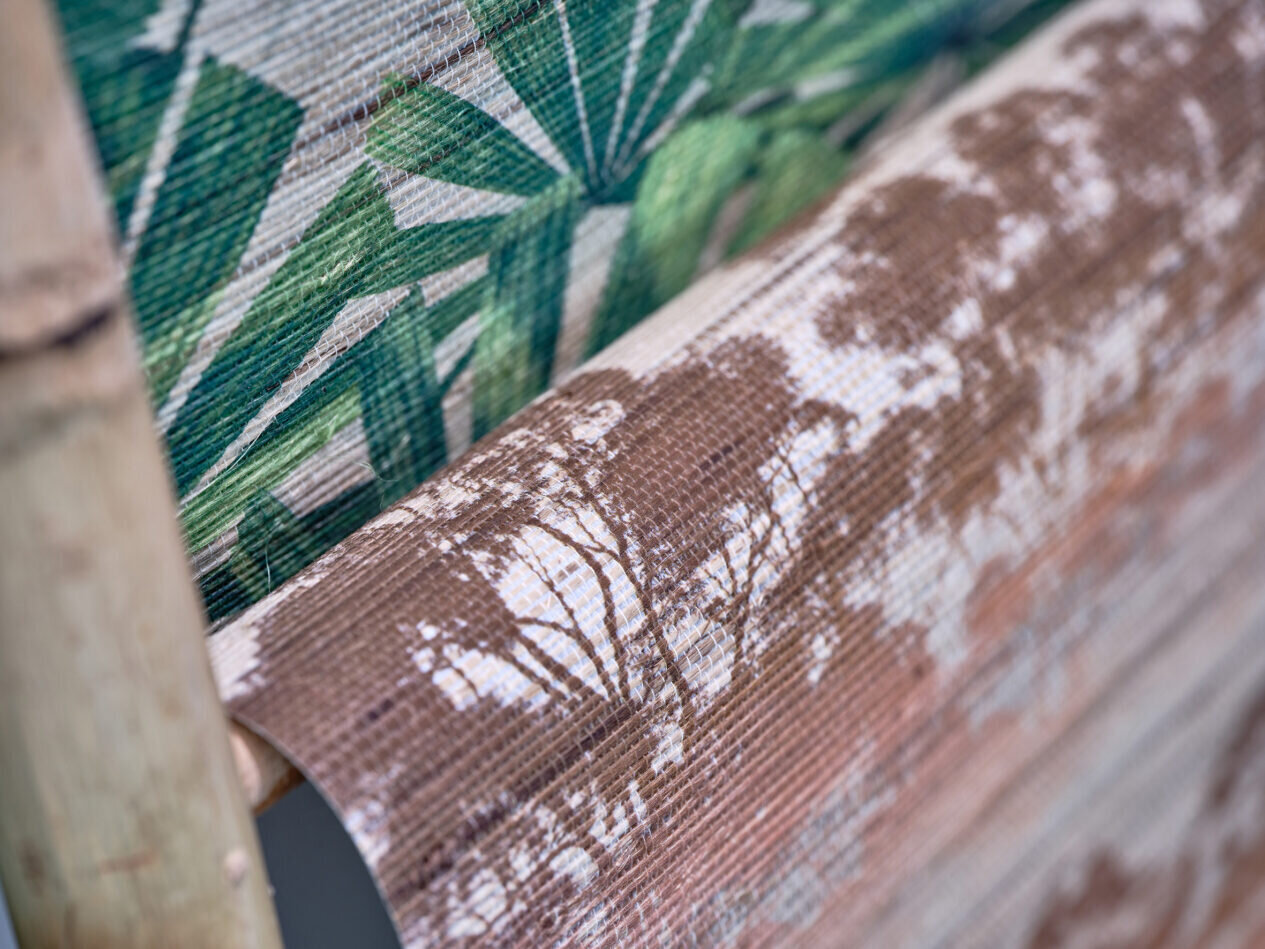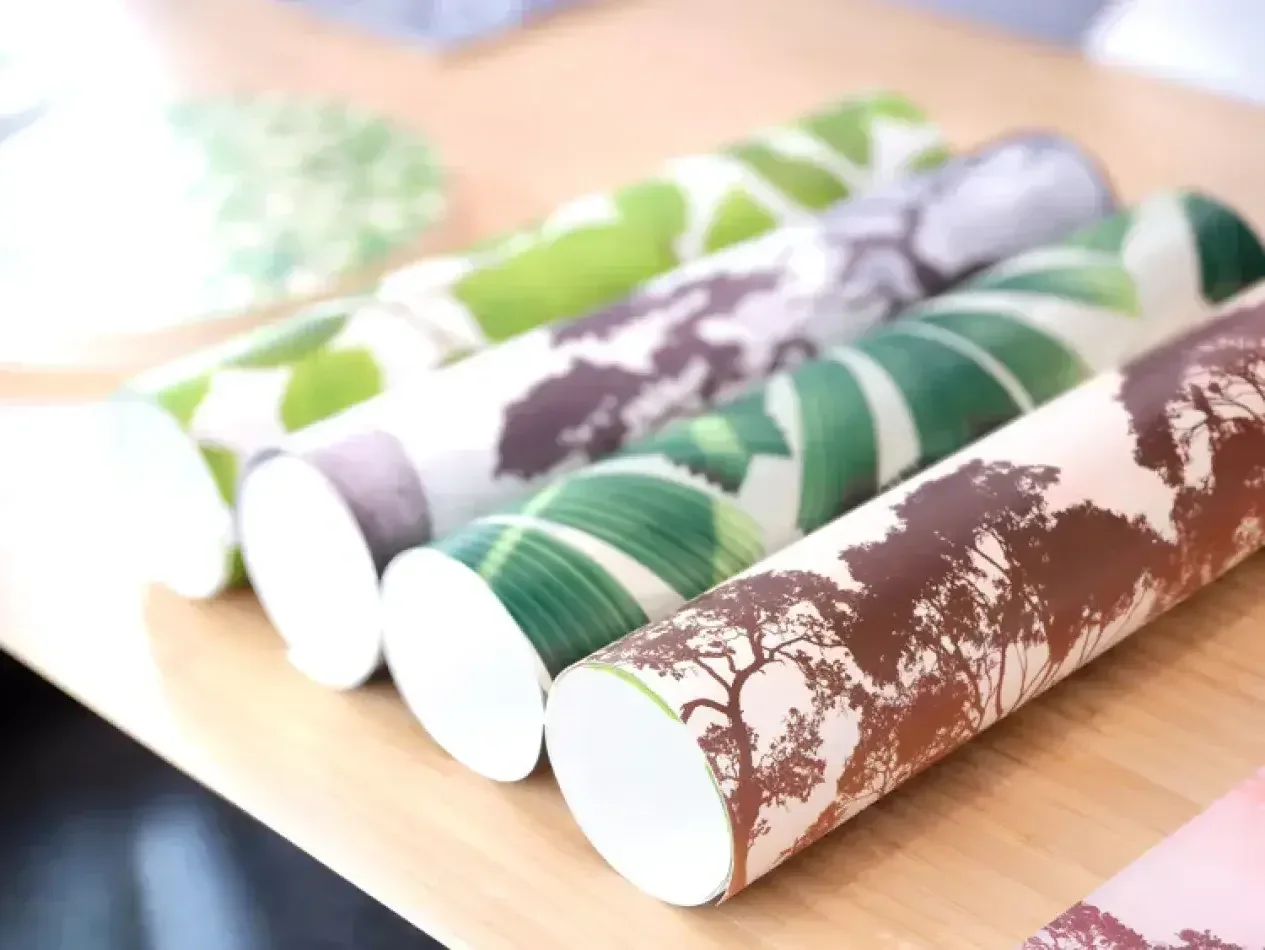
Debbie McKeegan discusses how digitally printed wallcoverings are a rapidly growing sector within the Interior Design world. Wallpaper, whether supplied and printed on-demand or by the roll, or as customised murals, and other large-scale décor elements, today represent an exploding global marketplace worldwide.
Digitally printed wallcoverings are a rapidly growing sector within the Interior Design world. Wallpaper, whether supplied and printed on-demand or by the roll, or as customised murals, and other large-scale décor elements, today represent an exploding global marketplace worldwide.
The digitally printed wallpaper market size was valued at USD 2.71 billion in 2022 and is expected to expand at a compound annual growth rate (CAGR) of 18.2% from 2023 to 2030, which will see the global market grow to over USD 10.32 billion (Research & Markets).
HP’s new offering of roll-to-roll wide format printers have been designed to tackle high-volumes of large format signage and to expand their market share within decorative applications.
Image Credit: FESPA

Consumers and Interior decorators alike now utilise digital technologies to aid the creation of aesthetically pleasing residential and commercial spaces. Spaces that are designed to client specification using unique design elements. The current trend towards this personalisation, is strongly reflected in the way people decorate their living/hybrid environments. This in turn has led to an increased market demand for exclusive and personalised decor, both for personal use as well as in business environments, generating new opportunities for the creative and the digital print supplier.
In addition, a shift in consumer preferences towards wallcoverings and an ever-increasing B2C market for DIY projects in this sector are now expected to drive market growth. Future predictions suggest that the wall covering industry will continue to grow in size and significance, thus amplifying opportunities within the market for printers and technology providers.
These five developments are indicative of the market vibrancy in this sector, strengthening entrepreneurial growth and unleashing major disruption within the long-established wallcovering eco-system.
Image Credit: FESPA

These market shifts form the key drivers for the digitally printed wallpaper business model and the machinery innovations that continually disrupt existing supply routes. Technology continues to thrive and to meet the expectations of the marketplace. Here we highlight five recent developments for digital wallcovering print machinery, all of which demonstrate the importance that machine manufacturers give to this expanding market:
The Durst Alpha Wallpaper Edition offers a productive digital printing system, with a production capacity of over 1,500 rolls per day or up to 1.2 million linear meters per year. The equipment delivers outstanding productivity and importantly – colour consistency across the entire print width or run length. Using Durst Alpha Pigment Inks, Durst also offers fully water-based inks in eight colours that enable (in their own words) “Healthy Sustained Wallpaper with a natural and high-quality look”.
From Epson the SureColor Resin 5000 (R5000) has been designed to produce both wallcoverings, décor and promotional material. It uses aqueous (water-based) ink that is similar to latex, whilst formulated for enhanced scratch resistance and importantly, curing at a lower temperature. This formulation also meets the highest ecological and OH&S certifications.
Additionally, the machine also incorporates Epson’s latest PrecisionCore ® print heads. The heads employ Variable Sized Dot Technology (VSDT) for an enhanced gamut with smooth gradation and minimum ink consumption. For ease of use, the machine also includes Epson Edge Print software which provides access to the full capabilities of the Epson print engine. Offering stable and consistent colour (an essential in the wallcoverings marketplace) makes this printer perfect for tiling and large-scale wallpaper applications.
Future predictions suggest that the wall covering industry will continue to grow in size and significance, thus amplifying opportunities within the market for printers and technology providers.
Image Credit: FESPA

New to the market is the Brother WF1-L640. A latex wide-format printer developed by Brother which functions as a wallcovering printer and also for sign and display applications. The machine utilises the company’s ink and printhead technology cultivated through the development of garment printers that print on fabric.
The latex ink developed for the WF1-L640 can achieve a wide array of colours and in addition, high weather resistance for outdoor advertisements. Inks are water-based and certified by GreenGuard Gold, making the prints suitable for indoor use as the ink has nearly no out gas. Thus, making this technology environmentally friendly and safe to use for a wide range of printed applications.
Launched last year by HP was the all-new latex 2700 digital printer. HP’s new offering of roll-to-roll wide format printers have been designed to tackle high-volumes of large format signage and to expand their market share within decorative applications. The 3.2m (126-in) wide HP Latex 2700 printers take production efficiency to the next level, offering vivid colours at up to 89 m2/hr (958 ft²/hr) via symmetrical double printheads, which come equipped with automatic printhead cleaning technology.
Last but definitely not least, is the Canon UVgel Wallpaper Factory which marks a stand-out moment for automated wallcovering production with its innate simplicity. Designed for maximum throughput, high quality and to run all day long, the UVgel Wallpaper Factory is a fully automated and modular production facility built for digitally printed wallpaper. It offers bulk-sized media input, and finished rolled output and delivers the productivity, quality, speed, and versatility which today’s wallcoverings market demands.
These five developments are indicative of the market vibrancy in this sector, strengthening entrepreneurial growth and unleashing major disruption within the long-established wallcovering eco-system.